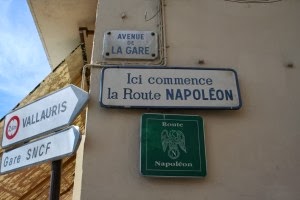taken from wikipedia
The Battle of Waterloo was fought on Sunday, 18 June 1815, near Waterloo in present-day Belgium, then part of the United Kingdom of the Netherlands. An Imperial French army under the command ofEmperor Napoleon was defeated by the armies of the Seventh Coalition, comprising an Anglo-allied army under the command of the Duke of Wellington combined with a Prussian army under the command of Gebhard von Blücher. It was the culminating battle of the Waterloo Campaign and Napoleon's last. The defeat at Waterloo ended his rule as Emperor of the French, marking the end of his Hundred Days return from exile.
Upon Napoleon's return to power in March 1815, many states that had opposed him formed the Seventh Coalition and began to mobilise armies. Two large forces under Wellington and Blücher assembled close to the north-eastern border of France. Napoleon chose to attack in the hope of destroying them before they could join in a coordinated invasion of France with other members of the coalition. The decisive engagement of this three-day Waterloo Campaign (16–19 June 1815) occurred at the Battle of Waterloo. According to Wellington, the battle was "the nearest-run thing you ever saw in your life".[6]
Napoleon delayed giving battle until noon on 18 June to allow the ground to dry. Wellington's army, positioned across the Brussels road on the Mont-Saint-Jean escarpment, withstood repeated attacks by the French, until, in the evening, the Prussians arrived in force and broke through Napoleon's right flank. At that moment, Wellington's Anglo-allied army counter-attacked and drove the French army in disorder from the field. Pursuing coalition forces entered France and restored King Louis XVIII to the French throne. Napoleon abdicated, surrendered to the British, and was exiled to Saint Helena, where he died in 1821.
The battlefield is in present-day Belgium, about 8 miles (13 km) south by south-east of Brussels, and about 1 mile (1.6 km) from the town of Waterloo. The site of the battlefield is today dominated by a large monument, the Lion's Mound. As this mound was constructed from earth taken from the battlefield itself, the contemporary topography of the part of the battlefield around the mound has not been preserved.
_______________________________________________________________________________
The link below is to a short video from BBC News about restoration projects currently being done at the site of The Battle of Waterloo.
_______________________________________________________________________________
I mention these facts because
A.) I am in France.
B.) History is nifty.
C.) When Napoleon escaped exile on the island Elba, it was here in Golfe Juan that he landed and began his trek to Paris and eventually, met his fate at Waterloo.
I was out walking this morning and saw a small sign on the side of a cafe, just across from the beach, that announces -




Look at you, edumicating the masses
ReplyDelete